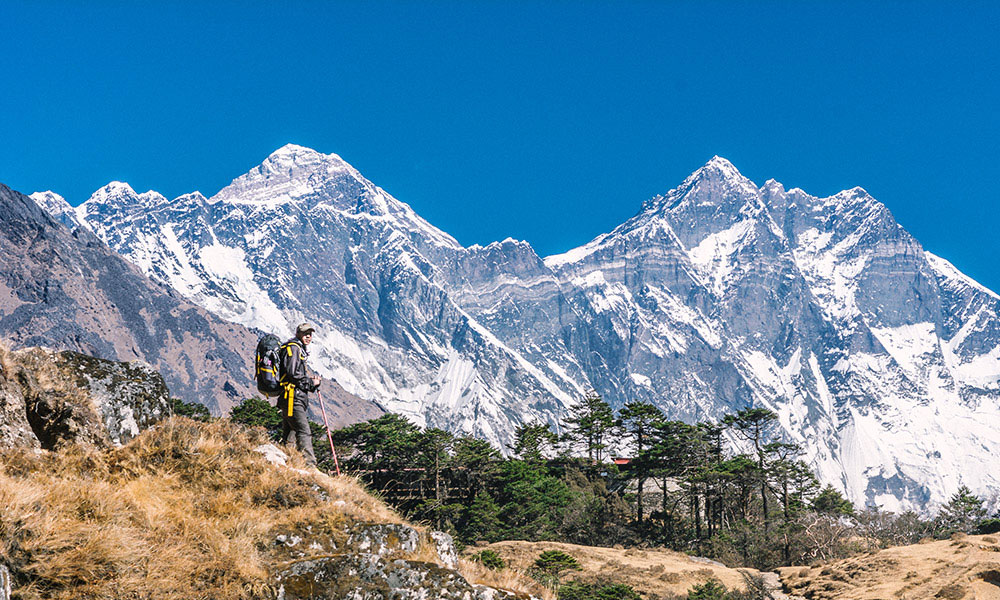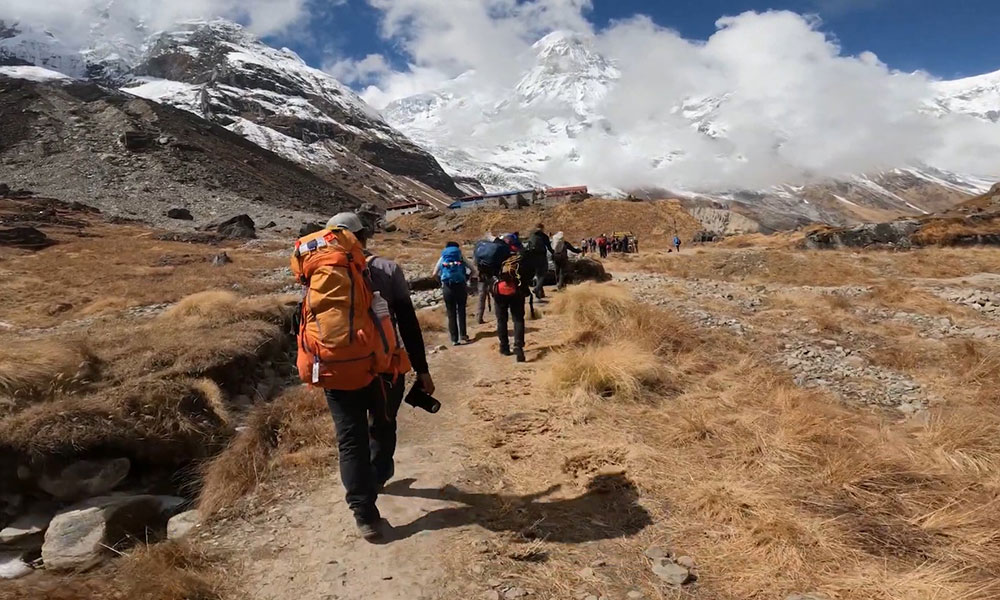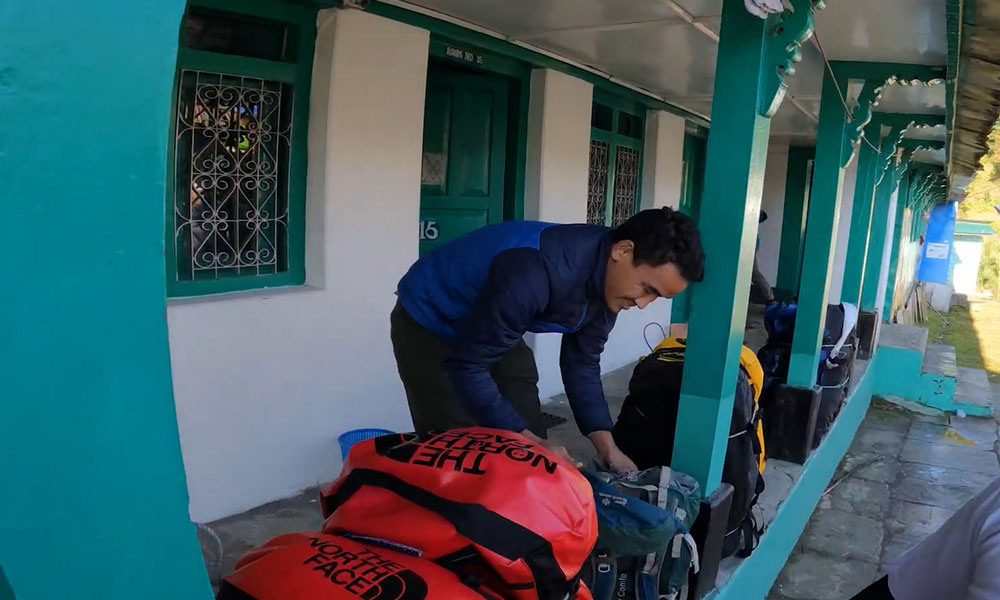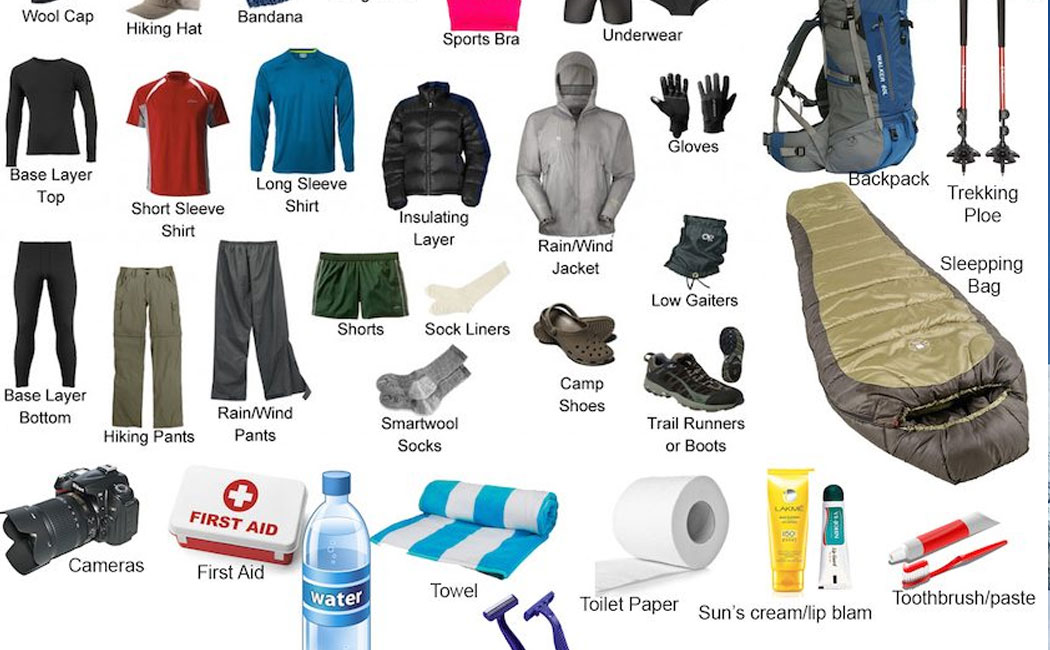Are you an adventure lover? Do you love to do trekking in Nepal? If yes, this blog is highly dedicated to you and all adventure lovers. But before that, at least you need to know some questions before Nepal Trekking. As this blog emphasizes the Top 12 Essential Tips for Trekking in Nepal, it can greatly help your upcoming Nepal Trekking Tour. Are you excited? If so, let's begin the blog now!
The landlocked Himalayan country of Nepal is an enchanting place for diverse reasons. Located in the Himalayas and as well as in the Indo-Gangetic Plain, it has a unique identity with religious harmony in the world. So, the land of the best Himalayas, Nepal, is home to unique and exotic cultures alongside the majestic Himalayas.
Trekking attracts thousands of visitors to Nepal every day and throughout the year. Trekking in Nepal is one of the topmost revenue earners for its economy, mountaineering, adventure sports, and jungle safari being the other main draws besides trekking.
Trekking Or Hiking

Be clear in the first place itself. Both are vastly different, as different as the weather on any given two days in Nepal. While trekking is spread over a few days at a stretch with intermediary breaks, hiking is essentially a single-day affair. The longer haul and multiple types of terrains and weather combine to make trekking in Nepal an altogether unique experience for adrenaline-driven people.
Nepal's captivating terrains, awe-inspiring mountains, and peaks, besides its lush green forests, are too good to resist for trekkers worldwide. This country has been offering many opportunities for the adventurous to test and satiate their hunger to gear up to tackle these lofty mountains.
At least a dozen trek routes are frequented in Nepal by the trekkers every year. While each is considered unique and wonderful in its right, the two regions- the Annapurna region and the Everest region – are the most inviting ones as highly sought after by the trekkers.
Technically, the southeast ridge on the Nepali side of the Himalayan Mountains is easier to climb. It is the main reason most climbers prefer to trek to Everest(you may read: Where is Mount Everest located?) through Nepal only. It is here where trekking in Nepal is enjoyed both in terms of encountering challenges and savoring the weather, which remains at its most fickle. Of these two compelling attractions, trekkers must take some tips for trekking in Nepal seriously to have the best takeaway from their adventure tours.
But before going headlong into tackling the treacherous and exciting terrain of Nepal for adventure lovers, a clear comprehension of dos and don'ts and the various types of hazards the trekkers encounter is an essential element to know and understand.
Let's explain the essential tips for trekking in Nepal to make it easier and more enjoyable for you—the trekkers. Read on.
Top 12 Best Tips For Trekking In Nepal
Perhaps, you are an experienced trekker or a newbie; you aim to fulfill this unique adventure with peace and determination to achieve the target. How will you be able to do that, and whether any universal or all-size-fit formula is applicable, or is there an ardent need to judge other factors as well? Simply, you should focus on some of the most notable tips for trekking in Nepal to attain success:
Deciding Your Route Choice

First and foremost, it is important to choose which area or route of trekking you will adopt and whether you have any strategy. While beautiful Everest base camp trekking is the ultimate test of endurance and willpower, the Annapurna Circuit is no walk in the park. Relatively, the Everest base camp trek is more popular; therefore, trekkers will have better as well as easy availability of help to emotional support on the way.
You should Remain Prepared and Ready with Weather-Proof Plan.
Having settled on which route to take was the first step. Now it is time to plan the length of your trekking in Nepal. While doing so, the fickleness of weather you must face in your rendezvous remains crucial. Include at least three days for a contingency to draw the utmost from the adventure. Remember this important caveat that weather in the mountainous country of Nepal is highly unpredictable.
The delay factor might as well start from the same flight stage. Domestic flights to Lukla, Pokhara, and any other areas of Nepal might usually get affected due to weather changes. You or your accomplices might get sick or need time to recuperate. Even if you are the luckiest to take off as per the schedule or stay fit, spending a few extra days before you embark on trekking in Nepal always pays. Be practical and assess every single factor.
Size Your Team

How will you be traveling? Solo? Couple? Family? Or as a Group? It is a crucial aspect to focus on. This will decide what needs to be taken, how much to be taken, who is to shoulder what etc., and much more. If you are alone, double-check on all the essentials and the trek gear. See every aspect minutely and reconfirm whether everything is in order. Any mishap on the way can otherwise prove to be a catastrophic experience you must avoid.
You are in a wild and uninhabited place with only a guide and porter. You can't afford to fix such issues to deviate your mind, lower your energy, or punch your plan for a downward escalation. It will only keep your morale low. That is why sizing the team and focusing on specific requirements matters most.
Timing Your Trek
Nevertheless, timing your trek is also one of the most important tips for trekking in Nepal. Selecting the ideal season will ease the travails of trekking. The spring and autumn periods between February to May and September to November are good for trekking in Nepal. The weather is normally dry during these two periods, thus facilitating a wholesome enjoyment of trekking so you enjoy it to the maximum level. For details, you may go through: Trekking Seasons in Nepal.
To Hire Guides and Porters or Not

The local guides are the ones who know the region like the back of their palm. It is sensible to hire a local guide to ease the worries about finding your way in a foreign land. It is also considered an ideal option by most trekkers in Nepal to use the services of porters too to carry their belongings. Though it may add to the total budget, it is worth it.
Care must be taken while enlisting your operator's services and the support staff there. Choose an operator with the best track record. Experience helps; therefore, you shouldn't compromise in making such selections.
Conditioning and Acclimatizing
Having frozen your plan and preparation for the trek, it is time to learn some ground-reality tips for trekking in Nepal. Unless you hail from any mountainous region anywhere in the world or even Nepal (which is mostly an unlikely possibility for you being a traveler), you will likely find it tough to encounter the vagaries of the mountain weather.
Trekking involves high-altitude climbing with relatively lesser oxygen levels as the altitude increases. This will kick in the altitude sickness that manifests as nausea and shortness of breath. These cannot be brushed away lightly. It's crucial to equip yourself with compatible medicines and regularly monitor your health vitals.
Don't push yourselves too hard. Make sure that you stay hydrated all the time. Ascend gradually. Descend at the first sign of continuous symptoms. This phenomenon is purely personal, and don't compare yourself with others as to how they are faring and what steps they take. Should you emulate others, and many questions are the ones that might haunt you? Tolerance thresholds differ; decide them based on your factors.
Equipment

Another major tip for trekking in Nepal concerns your trekking equipment. Your trek is only as good as your gear. It is that simple. Get the best of the water and weatherproof shell jacket. Don't forget to have several underlayers of clothing and an enduring fleece.
The weather out there is going to be un-pardoning. Please pair or two of good trekking boots and a sleeping bag. Have a trekking pole handy all the time. They relieve the load off your knees by as much as 20%.
Include a First Aid Kit, personal medications, vitamins, antibiotics for respiratory and stomach-related infections, tissue paper, a sufficient quantity of hand sanitizers, a headlamp, and batteries. If you are a shutterbug, pack extra batteries for your digital camera.
To be safe, carry a battery backup for your cell phone or a solar charger. Electricity services are not dependable on the way.
Personal Hygiene
A daily shower is a luxury while on a trek. Have no misgivings about it. Showering in cold water there is too risky, and hot water is sparsely available. Let your hygiene not take a hit during the trek. Equip with the sponge bath gear. Pack in loads of deodorants, perfumes, and sanitizers. Be kind to yourself and those around you too!
Localize
It pays to be a Roman while in Rome! Learn the basics of the culture, a little everyday vocabulary, a peep into the Buddhist culture, ways of life, and interactions to do in the localized connotation. It helps ease your cause. Don't expect the porters or the locals to converse with you in English. Therefore, a little bit of localized preparation will matter the most.
Carry local currency. Don't expect a money changer in remote areas! Exchange your currency at Kathmandu or any major exchange center (like Pokhara, Namche Bazaar, etc.) before you begin your trek. Have Nepali currency to buy your way through the trek.
Stay Safe from Yaks

Nepal's mountainous/trekking region is high in Yaks and packs of animals. The trekkers and villagers use these strongly built animals to carry loads. They are far from civil and are usually shaggier with their heavy horns. Stay on the mountainside of the road if ever you encounter these Yaks or mules carrying loads. Stay Away From The Ridge.
After all, you don't want to be "Yaked" down the valley!
Tackling Emergency
The best of the planned adventures are possible to run into difficulties. The weather is what it is in Nepal, and emergencies of various hues and sizes are not unexpected, so you should plan your preparation. Have a to-do list to face such eventualities. Primarily, draw the attention of your guide when faced with such situations. He will act fast and organize the relevant rescue.
If you or your team member gets injured, requisition the help of the porter to carry you or them. Remember, you carry the First Aid Kit, so use that instantly. It might come in handy on such occasions.
Safety at All Times
Enjoyment and fun are possible only if you are safe(you may read: Is Nepal safe for female travelers?). Don't risk the unknown. A thorough knowledge of what you are attempting, what the hurdles and the efforts are, and size up your preparedness for every task. Don't hesitate to take the advice of the local guides or porters. They may seem rustic and uninitiated. But they are the locals, and so are they in the know-how of the ins and outs of trekking.
Be level-headed, always.
You may also like:
Conclusion:
Trekking in Nepal is at once a challenge and fun. Meet the challenge with proper preparedness. Study the reviews, comprehend what you are in for, and speak to the experts, if possible, for wholesome information about Nepal Trekking. Put your best foot forward to face the challenge squarely and realize your dream.
Safe and happy trekking!

